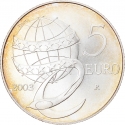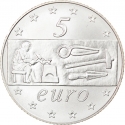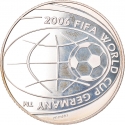You are about to finish your registration. Please check your mailbox (including spam folder). There should be a letter with a confirmation link. Check setting to make sure that your e-mail address is correct.
Send letter againDescription
The Sistine Chapel ceiling (Italian: Soffitto della Cappella Sistina), painted in fresco by Michelangelo between 1508 and 1512, is a cornerstone work of High Renaissance art. The Sistine Chapel is the large papal chapel built within the Vatican between 1477 and 1480 by Pope Sixtus IV, for whom the chapel is named. The ceiling was painted at the commission of Pope Julius II.
The ceiling's various painted elements form part of a larger scheme of decoration within the chapel. Prior to Michelangelo's contribution, the walls were painted by several leading artists of the late 15th century including Sandro Botticelli, Domenico Ghirlandaio, and Pietro Perugino. After the ceiling was painted, Raphael created a set of large tapestries (1515–1516) to cover the lower portion of the wall. Michelangelo returned to the chapel to create The Last Judgment, a large wall fresco situated behind the altar. The chapel's decoration illustrates much of the doctrine of the Catholic Church, serving as the location for papal conclaves and many other important services.
Central to the ceiling decoration are nine scenes from the Book of Genesis, including the famous Creation of Adam. The complex design includes several sets of figures, some clothed and some nude, allowing Michelangelo to fully demonstrate his skill in depicting the human figure in a wide variety of poses. The ceiling was immediately well-received and imitated by other artists, continuing to the present. It has been restored multiple times, most recently in the late 20th century.
Engraver: Maria Carmela Colaneri
Obverse
_2012_31.10.2022_14.03-60.jpg)
|
Depicts a face detail of a nude male figure, the ignudo, from the Sistine Chapel frescoes in the Vatican. Below the image the name of the engraver, the country name around. REPUBBLICA ITALIANA |
|---|---|
Reverse
_2012_31.10.2022_14.03_01-60.jpg)
|
Detail of the ignudo as a reference to the allegory which gives unity to the whole project of the Sistine Chapel’s ceiling. On the right, the arch-shaped inscription SISTINE CHAPEL together with the years “1512” and “2012”, coin’s year of issue; below, on the left, the face value and the mintmark “R”. CAPPELLA SISTINA |
| Edge |
Related coins
2006 Football (Soccer) World Cup in Germany
_2012_31.10.2022_14.03.jpg)
_2012_31.10.2022_14.03_01.jpg)
_2012_07.10.2022_15.18.jpg)
_2012_31.10.2022_14.03_02.jpg)
_2012_07.10.2022_15.18-60.jpg)
_2012_31.10.2022_14.03_02-60.jpg)





